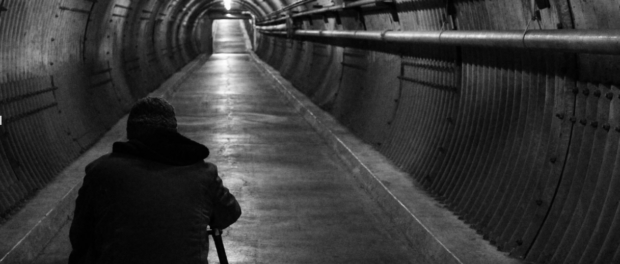Image + Nation Fest: The Fruit Machine Review
The Canadian-made documentary The Fruit Machine is a timely and important film not only in terms of bringing to light an injustice that has been ignored and swept under the proverbial rug for far too long, but also because it puts a human face on the struggles and prejudices faced by members of the LGBTQ community to achieve equality and justice of some sort. Sarah Fodey’s insightful documentary focuses on victims of the so called “gay purge” which was carried out by the Canadian military during the 1950s up until the 1990s. This documentary comes at a time when the rights of women, Aboriginals, and other minority groups – including cultural movements such as Black Lives Matter – have made the headlines. The Fruit Machine serves to raise awareness and hold the Canadian government accountable for their past misdeeds and discriminatory treatment of LGBTQ soldiers and civil servants.
The film illustrates how the gay purge resulted in not only homosexual military members being harassed, unfairly interrogated, and ultimately stripped of their jobs, but deep wounds such as the loss of dignity, respect, self worth, and self esteem upon the former military personnel who were kicked out of the service simply because of their sexual orientation. Although the Canadian military is often portrayed as being a unitary force with lofty ideals of protecting the country as well as our rights and freedoms, the gay purge pitted officer against officer and sowed seeds of distrust, suspicion, and fear among Canada’s troops. It also created an atmosphere in which LGBTQ individuals were relegated to the status of “less than” and as such deemed unworthy of their military careers.

While watching The Fruit Machine by Sarah Fodey, viewers are bound to experience a whole range of emotions. First there is a sense of shock that such a purge was actually conducted by the RCMP and Canadian government, especially given that Canada is perceived to be one of the most free and just societies in the world. Filmgoers will no doubt also be overcome with sadness as individual victims bravely reveal their heartbreaking and shocking personal stories of being rooted out, questioned like criminals, and then dismissed from the military. Despite all of this dark, emotionally riveting material, however, The Fruit Machine is not without its humorous moments.
No doubt viewers won’t be able to help themselves from having a good laugh at the dated, illogical, and completely ridiculous list of clues officially distributed by the RCMP which supposedly indicated whether or not a service member was in fact a homosexual.Early in the documentary we get a notion of the simplistic, nonsensical, and stereotypical characteristics that authorities of the time concluded to be sure indications of being gay or lesbian. In terms of men, some of these tell-tale signs included wearing a pinkie ring, carrying books against your chest as opposed to at your side, as well as driving a white convertible car. It’s shocking to imagine that such a device as the Fruit Machine actually existed. Watching how this technology measured pupil dilation in order to gauge sexual arousal may even draw comparisons to how the Voight-Kampff machine was utilized in the classic 1982 sci-fi flick Bladerunner in order to identify replicants.

What made the recent screening of The Fruit Machine at Image + Nation all the more poignant was the presence of several of the female officers who were interviewed in the film. Their bravery in stepping forward and revealing the ugly details of the ordeals they went through was inspiring and a lesson in courage. Perhaps what was most surprising of all, however, was the fact that out of all the victims of the gay purge, a large number of former soldiers agreed that if given another opportunity, they would reenlist in Canada’s military. This proves that you can take the soldier out of the army, but you can’t take the army out of the soldier.
The Fruit Machine screened as part of this year’s Image + Nation Festival on November 24. The documentary can be viewed here.






